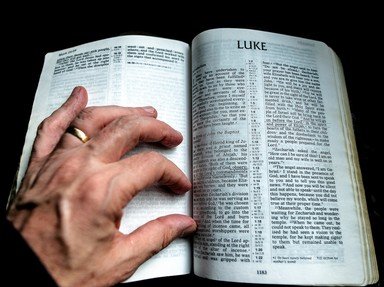Quiz Answer Key and Fun Facts
1. Luke is the only Gospel to tell of Jesus healing ten lepers, as per Luke 17:11-17. After they were cured, one of the lepers returned to give thanks to Christ. What nationality was the leper?
2. The parable of the Prodigal Son can be found in only the Gospel of Luke. When the son moved to a distant land and spent all his money on wild living, what job did he end up doing after a severe famine struck?
3. The parable of the Good Samaritan can be found in only the Gospel of Luke. Before the Good Samaritan stopped to help a severely beaten man by the roadside, how many people had passed the victim by?
4. Only in the Gospel of Luke do we read about a widow's son being raised from the dead. Where did the miracle take place?
5. Only in the Gospel of Luke do we read about Zacchaeus, the chief tax collector of Jericho, meeting Jesus. According to Luke 19:1-10, Zacchaeus made a pledge to Jesus to right things if he had done any wrong. What percentage of his possessions did he say he would give to the poor, as per the NIV?
6. Only in the Gospel of Luke do we read about the persistent widow. Who was the persistent woman continually issuing a plea to?
7. Only in the Gospel of Luke do we read the parable known as The Rich Man and Lazarus. According to Scripture, what was the name of the rich man?
8. Only in the Gospel of Luke do we read the parable called The Pharisee and the Tax Collector. Why did the Pharisee think he was superior to the tax collector?
9. The account of the dying thief on the cross being assured by Jesus he will enter paradise appears only in the Gospel of Luke. According to Scripture, shortly after Christ made this promise, the sun darkened, the veil of the temple was torn in two and He died.
10. Luke is the only Gospel to tell which the community Jesus was near when He ascended into Heaven after His crucifixion. What was the community?
Source: Author
Cowrofl
This quiz was reviewed by FunTrivia editor
CellarDoor before going online.
Any errors found in FunTrivia content are routinely corrected through our feedback system.

